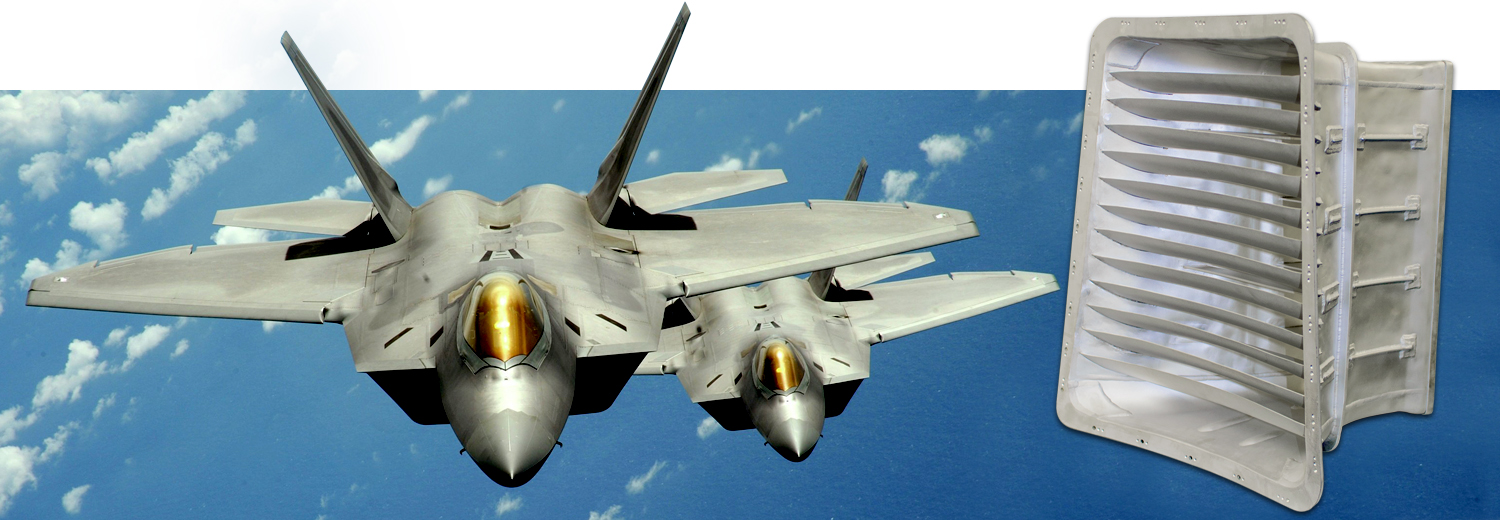The F-22 APU Air Intake Grill. Built to Withstand Airspeeds At Mach 2.
PRODUCT OVERVIEW
- Complex Aluminum Forms
- Uniquely Stronger Welds to Withstand Vibration
- Constructed to Withstand Extremes in Temperatures
This very sophisticated design was a manufacturing challenge. Made from high-grade aluminum, the original design was soon discovered to react to air pressures at speeds above Mach 1, when the force of the air and the location of the vents created tremendous vibration of the louvers. The sound this generated, behind the cockpit, was so loud it could be heard in the cockpit through the pilot’s helmet.
ACE was assigned the re-manufacturing of the new design by our key customer Honeywell. Welding aluminum is very difficult due to the nature of the metal, rapid oxidation and porosity of the welds (due to imperfect conditions, such as high humidity). The louvers, or “fins” had to withstand the extreme conditions found at speeds above Mach 1: baking-to-freezing temperatures, expansion, tremendous wind force, vibration and air turbulence. This very heavy gauge construction was developed for and exceeded the demands required for the intake grill.



